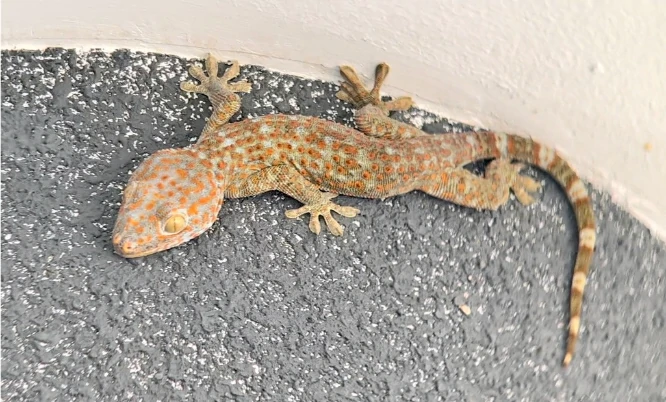If you’ve ever looked at a lizard and thought it looks a bit like a dinosaur, you’re not wrong. There’s just something about the way it moves, the slow turn of its head, the flicking tongue, the scaly skin that makes it feel like it came from another time.
You can almost picture it crawling around while huge dinosaurs stomped past. But are lizards really dinosaurs? Or are they at least related to dinosaurs ?
Yes, lizards and dinosaurs are related, but not as closely as you might think. Both lizards and dinosaurs share ancient reptile ancestors that lived over 250 million years ago, but they belong to different branches of the reptile family tree. Lizards come from one branch called “lepidosaurs,” while dinosaurs (and birds, which evolved from them) come from another called “archosaurs.”
So while lizards might look like tiny dinosaurs, they’re really more like distant cousins than direct descendants.
How Lizards and Dinosaurs Split Apart
To understand how they’re related, you have to go way back, long before T. rexes or even lizards as we know them.

About 260 million years ago, there were small, scaly reptiles called diapsids. They had two holes behind each eye. Over time, these reptiles split into two big groups:
-
Archosaurs, which eventually led to crocodiles, pterosaurs, dinosaurs, and later birds.
-
Lepidosaurs, which led to modern lizards, snakes, and tuataras.
That split is what separates dinosaurs from today’s lizards. Even though they share an old ancestor, lizards didn’t evolve from dinosaurs.
They grew alongside them. You could say they’re like cousins who took very different paths.
Did Lizards Live Alongside Dinosaurs?
Even though lizards aren’t dinosaurs, they’ve been around almost as long.
The oldest lizards date back to the Triassic period, roughly 240 million years ago, when dinosaurs were just starting to appear.
These early lizards were small, quick, and looked a lot like some modern species. They probably scurried underfoot while huge dinosaurs stomped around.
Think of it like this: while dinosaurs ruled the land, lizards survived in the shadows, hiding in cracks, darting between rocks, and eating insects.
When the asteroid hit and wiped out most dinosaurs 66 million years ago, lizards kept going.
That shows just how good they are at surviving.
Lizards and Dinosaurs Look Similar, But for Different Reasons
It’s easy to look at a lizard and think, “That’s a tiny dinosaur.” The scales, claws, and movements feel almost the same.
But those similarities come from shared ancestry and from developing traits that just work well.
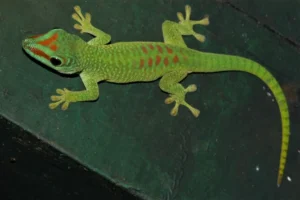
Both dinosaurs and lizards kept traits from their early reptile ancestors, like scaly skin and sprawling limbs. Over millions of years, those traits kept working, so nature didn’t change them.
For example:
-
The Komodo dragon, the largest living lizard, looks like a mini dinosaur, but it’s from a completely different line.
-
Even smaller lizards like green iguanas or monitor lizards move with that same slow, careful rhythm that feels prehistoric, but it’s just how reptiles move.
Under the skin, the differences are big. Dinosaurs had hips made for walking upright, some had feathers, and their bones were built for much bigger sizes than most lizards could ever reach.
So even if they look similar, they’ve actually been evolving separately for over 250 million years.
What’s The Closest Living Relatives of Dinosaurs?
If lizards aren’t dinosaurs, who is? Believe it or not, it’s birds.
Modern birds are actually living dinosaurs. They came from small, feathered dinosaurs called theropods, the same group that includes Velociraptor and T. rex.
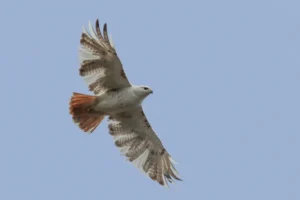
That means the sparrow or pigeon outside your window is more closely related to a T. rex than a lizard is.
Fossils show feathers, wing shapes, and even nesting behaviors in many dinosaurs. Birds didn’t just come from dinosaurs, they are dinosaurs.
Lizards and dinosaurs aren’t close cousins the way you might think. Dinosaurs were on the archosaur line, which split into crocodiles and birds, while lizards were on the lepidosaur line.
So birds, not lizards, are the closest living dinosaur relatives.
For example, Velociraptor shares more in common with an ostrich or hawk than with a modern iguana. Their bones, legs, and even some behaviors like hunting in groups or sitting on eggs are similar.
Birds kept the dinosaur family tree alive, while lizards went their own way.
Crocodiles: The Dinosaurs’ Closer Cousins
If we’re talking about reptiles really close to dinosaurs, crocodiles win. Crocodiles, alligators, and their extinct relatives are archosaurs, just like dinosaurs were.
That’s why crocodiles look and act a bit more dinosaur-like. They have similar skulls, strong jaws, and a semi-sprawling stance. They haven’t changed much in over 200 million years.
Meanwhile, lizards are on the other side of the reptile family tree still very old, but not from the same branch.
If lizards are the fast, agile cousins, crocodiles are the big, ancient uncles that stayed closer to dinosaurs.
Why Lizards Survived When Dinosaurs Didn’t
When the asteroid hit 66 million years ago and wiped out most dinosaurs, lizards made it through.
How? Their small size, flexible diet, and low energy needs helped a lot.
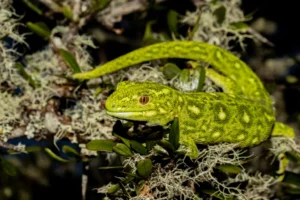
Large animals that needed lots of food and stable environments, like dinosaurs, didn’t stand a chance. But small lizards that could hide underground and eat insects had a much better shot.
Even today, their adaptability shows. Lizards live in deserts, jungles, mountains, and even cities.
They can lose their tails to escape danger, go weeks without food, and survive heat or cold. That same ability probably saved them millions of years ago.
Lizards Today Still Carry Ancient Traits
One of the coolest things about lizards is how much of their old body traits still work today.
Their scales protect them from drying out and injuries, just like they did for early reptiles.
Their egg-laying habits haven’t changed much in over 200 million years.
Even being cold-blooded links them to life from long ago, helping them survive where mammals might struggle.
When you look at a lizard, you’re seeing a living fossil; a creature that’s been using the same survival plan since before the first mammals appeared.
The Tuatara is like a Living Time Capsule
If you want to see something close to early lizards, meet the tuatara.
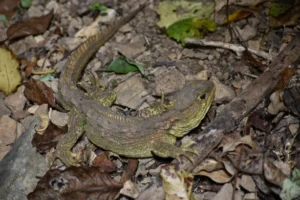
It’s a reptile from New Zealand that looks like a lizard but isn’t one. It belongs to its own ancient group that split from lizards about 250 million years ago.
Scientists call it a “living fossil” because it hasn’t changed much since dinosaurs were around.
The tuatara even has a “third eye,” a light-sensitive spot on top of its head that helps it sense sunlight and set its body clock. That’s something straight out of prehistory.
It’s not a dinosaur, but it shows how old and enduring these reptile families are.
How Do We Know Lizards Aren’t Dinosaurs?
Scientists can tell lizards and dinosaurs apart by looking at their bones.
- Lizards have flexible skulls and a sprawling stance; their legs stick out to the sides.
- Dinosaurs stood with legs straight under their bodies, like birds and mammals do.
- Dinosaurs also had hips and bones that lizards never got.
Even fossil footprints tell the story. Dinosaur tracks show upright, forward-moving animals, while ancient lizard tracks look more side-to-side, like a crawl.
Even if they share some traits, their skeletons show two very different life paths.
Why People Confuse Lizards With Dinosaurs
It’s easy to see why people mix up lizards and dinosaurs. They both have scaly skin, lay eggs, and sometimes have long tails or claws.
Movies and cartoons make lizards look like mini-dinosaurs, with spikes, frills, or big teeth.
Even in real life, people say “Komodo dragons are like mini T-Rexes,” which is fun to imagine but not true.
Lizards are interesting creatures on their own without needing a dinosaur connection. They’ve evolved on their own and figured out how to survive in clever ways.
What This All Says About Evolution
The story of lizards and dinosaurs shows how life can split, change, and keep going in very different ways.
From one group of early reptiles, nature produced two very different paths:
-
One grew huge, ruled the Earth, and eventually became birds.
-
The other stayed small, clever, and adaptable; the lizards we see today.
It’s a perfect example of evolution in action: one line rose and fell, the other survived and kept going.
Conclusion
Lizards might look like tiny dinosaurs, but they’re not part of the same family. They’re distant relatives, two branches that grew from the same ancient root millions of years ago.
Lizards aren’t dinosaurs, but they are living reminders of that old world. They crawled under the feet of dinosaurs, survived the extinction that wiped them out, and are still thriving today in your backyard, on walls, or under warm rocks.
When you see a lizard soaking up the sun, you’re not just looking at a modern reptile, you’re seeing a survivor, a creature whose ancestors watched the age of dinosaurs come and go.
That little lizard isn’t a dinosaur, but it carries a bit of that old world in every scale.
Hi, my name is Ezra Mushala, i have been interested animals all my life. I am the main author and editor here at snakeinformer.com.

